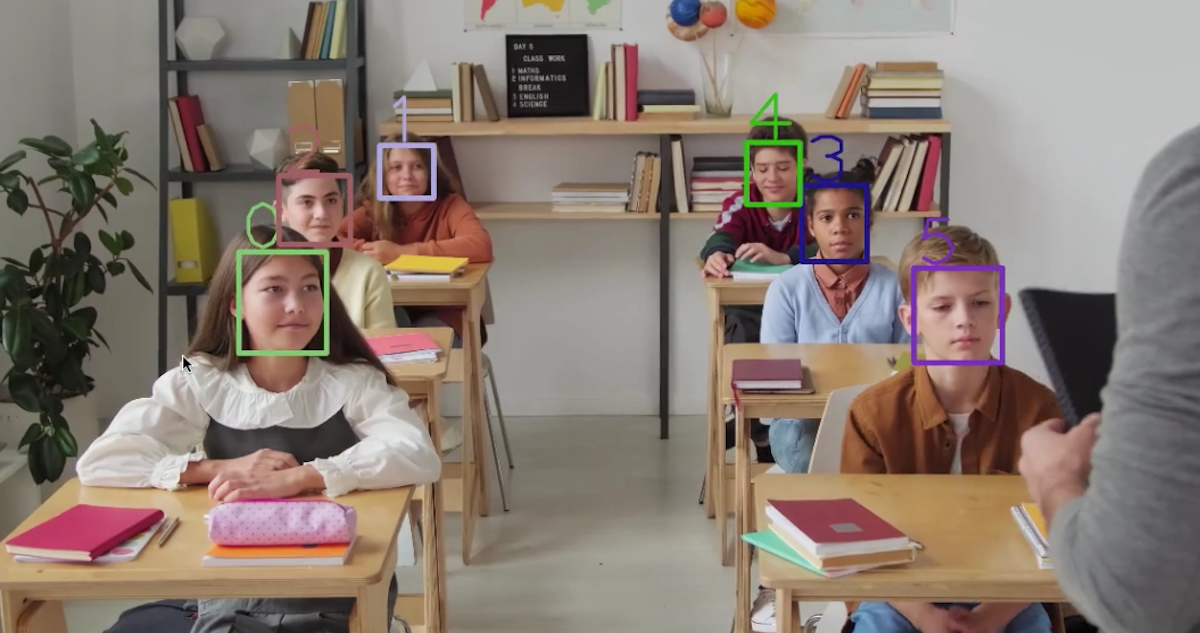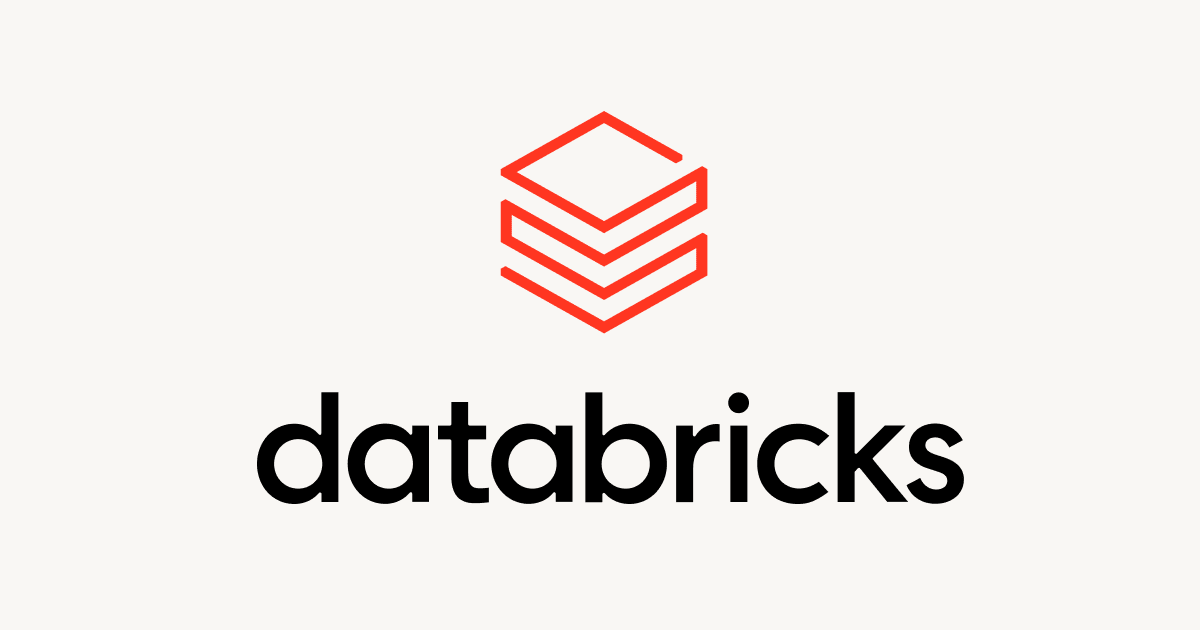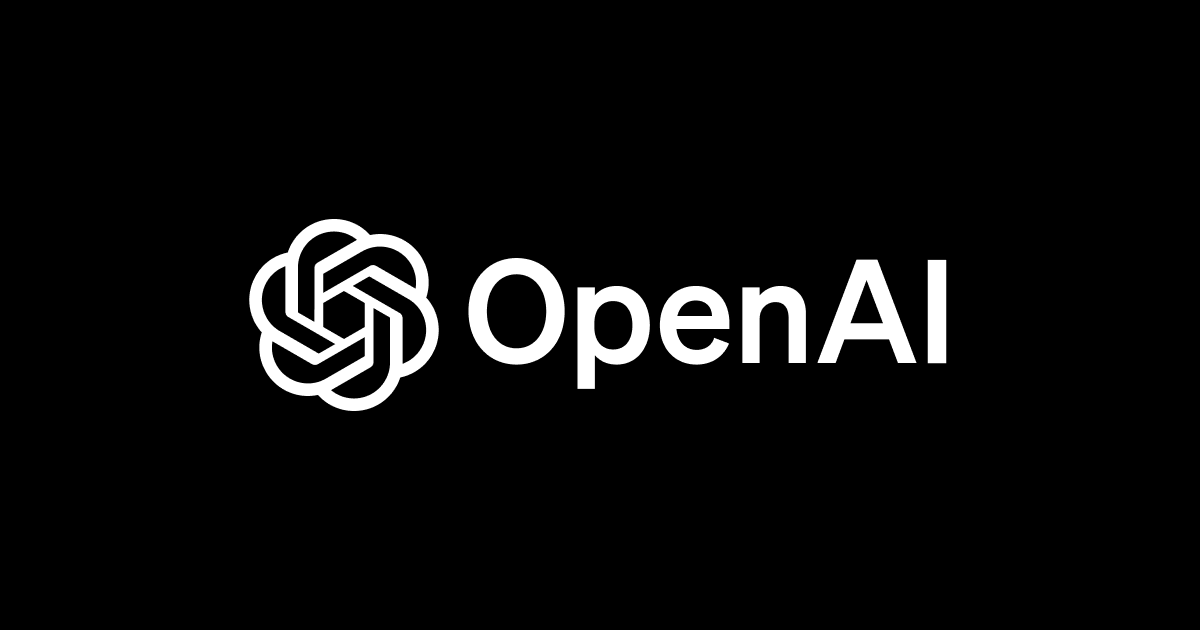
Face Re-Identificationで顔を追跡してみました
1 はじめに
CX事業本部の平内(SIN)です。
機械学習で画像から顔を検出する事が可能ですが、検出された顔が、フレーム間で一致できれば、色々応用がききそうです。
前回、人物検出と人物識別のモデルで人の追跡を試してみましたが、これと組み合わせることで、追跡や識別を強化できるかも知れません。
最初に、試した見た様子です。
動画は、Pixels Videosを利用させて頂きました。
2 しくみ
顔の識別は、2つのモデルを組み合わせることで動作しています。
- 顔検出モデル
- 顔識別モデル
顔検出モデルで、顔を検出しその画像を切り出します。 続いて、顔識別モデルで、部分画像の識別情報を生成し、インデックスを付けてデータベース化しています。
各フレームでは、顔画像をデータベースと照合し、類似性から同じ人物であるかどうかを判断してます。

3 モデル
推論のフレームワークは、OpenVINOを利用させて頂きました。
OpenVINOでは、色々な機械学習フレームワークで作成されたモデルを、中間表現(IR)フォーマットに変換して推論に使用していますが、既に、変換されたモデルがインテルによって公開されており、今回は、ここから利用させて頂いています。
open_model_zoo
(1) face-detection-0100
MobileNetV2に基づく顔検出モデルです。

入出力は、以下の通りです。
Inputs
Name: input, shape: [1x3x256x256] - An input image in the format [BxCxHxW], where:
- B - batch size
- C - number of channels
- H - image height
- W - image width
Expected color order: BGR.
Outputs
The net outputs blob with shape: [1, 1, N, 7], where N is the number of detected bounding boxes. Each detection has the format [image_id, label, conf, x_min, y_min, x_max, y_max], where:
- image_id - ID of the image in the batch
- label - predicted class ID
- conf - confidence for the predicted class
- (x_min, y_min) - coordinates of the top left bounding box corner
- (x_max, y_max) - coordinates of the bottom right bounding box corner.
(2) face-reidentification-retail-0095
顔の再識別シナリオ用の軽量ネットワークです。
face-reidentification-retail-0095
/opencv/2020/openvinotoolkit/2020.4/open_model_zoo/models_bin/1/face-reidentification-retail-0095/

入出力は、以下の通りです。
Inputs
Name: "data" , shape: [1x3x128x128] - An input image in the format [BxCxHxW], where:
- B - batch size
- C - number of channels
- H - image height
- W - image width
Expected color order is BGR.
Outputs
The net outputs a blob with the shape [1, 256, 1, 1], containing a row-vector of 256 floating point values. Outputs on different images are comparable in cosine distance.
4 識別情報のデータベース
識別情報にインデックスを付けて、データベース化するところは、この仕組みの中心ですが、前回の人物追跡よりは、やや、簡単になりました。
しかし、適用する分野(動画の種類)に応じて、ロジックの変更が必要なのは変わらないと思います。
(1) 類似度0.3以上を適用
正面から撮影している動画であり、比較的安定して顔の識別情報が取れるため、類似度0.3以上は、全て採用しています。 そして、同じインデックスが複数になった場合は、類似度の低い方を無効としました。
(2) 類似度0.3以下は追加
類似度0.3以下の場合、新規の人物が登場したと判断し、インデックスを追加しています。
(3) データベースの更新
今回のデータベースには、顔検出の時点の信頼度もデータベースとして追加されています。
類似度が、0.9以上で、データベースを更新するのですが、この際、既存のデータの信頼度と比較して、それを超える場合のみ更新としています。 これにより、顔が横を向いていたり、一部隠れていたりした場合の信頼度の低い情報を排除しています。
5 コード
作成したコードです。
FaceDetector及び、FaceReidentificationは、それぞれ、人物検出と個人識別モデルを使用するクラスです。
Tracker内に、データベース化された識別情報が格納されており、getIds()でインデックスの取得及び、データベースの更新が行われています。
index.py
import numpy as np
import time
import random
import cv2
from openvino.inference_engine import IEPlugin
from model import Model
class FaceDetector(Model):
def __init__(self, plugin, model_path, threshold, num_requests=2):
super().__init__(plugin, model_path, num_requests, None)
_, _, h, w = self.input_size
self.__input_height = h
self.__input_width = w
self.__threshold = threshold
def __prepare_frame(self, frame):
# shape: [1x3x256x256] - An input image in the format [BxCxHxW], where:
initial_h, initial_w = frame.shape[:2]
scale_h, scale_w = initial_h / float(self.__input_height), initial_w / float(self.__input_width)
in_frame = cv2.resize(frame, (self.__input_width, self.__input_height))
in_frame = in_frame.transpose((2, 0, 1))
in_frame = in_frame.reshape(self.input_size)
return in_frame, scale_h, scale_w
def infer(self, frame):
in_frame, _, _ = self.__prepare_frame(frame)
result = super().infer(in_frame)
# The net outputs blob with shape: [1, 1, N, 7],
facese = []
height, width = frame.shape[:2]
for d in result[0][0]:
if(d[2]>self.__threshold):
face = [
int(d[3] * width),
int(d[4] * height),
int(d[5] * width),
int(d[6] * height),
d[2]
]
facese.append(face)
return facese
class FaceReidentification(Model):
def __init__(self, plugin, model_path, num_requests=2):
super().__init__(plugin, model_path, num_requests, None)
_, _, h, w = self.input_size
self.__input_height = h
self.__input_width = w
def __prepare_frame(self, frame):
initial_h, initial_w = frame.shape[:2]
scale_h, scale_w = initial_h / float(self.__input_height), initial_w / float(self.__input_width)
in_frame = cv2.resize(frame, (self.__input_width, self.__input_height))
in_frame = in_frame.transpose((2, 0, 1))
in_frame = in_frame.reshape(self.input_size)
return in_frame, scale_h, scale_w
def infer(self, frame):
in_frame, _, _ = self.__prepare_frame(frame)
result = super().infer(in_frame)
# (1, 256, 1, 1) => (256)
return result[0, :, 0, 0]
class Tracker:
def __init__(self):
# 識別情報のDB
self.identifysDb = None
# 顔の信頼度のDB
self.conf = []
def getIds(self, identifys, persons):
if(identifys.size==0):
return []
if self.identifysDb is None:
self.identifysDb = identifys
for person in persons:
self.conf.append(person[4])
print("input: {} DB:{}".format(len(identifys), len(self.identifysDb)))
similaritys = self.__cos_similarity(identifys, self.identifysDb)
similaritys[np.isnan(similaritys)] = 0
ids = np.nanargmax(similaritys, axis=1)
for i, similarity in enumerate(similaritys):
persionId = ids[i]
print("persionId:{} {} conf:{}".format(persionId,similarity[persionId], persons[i][4]))
# 0.9以上で、顔検出の信頼度が既存のものより高い場合、識別情報を更新する
if(similarity[persionId] > 0.9 and persons[i][4] > self.conf[persionId]):
print("? refresh id:{} conf:{}".format(persionId, persons[i][4]))
self.identifysDb[persionId] = identifys[i]
# 0.3以下の場合、追加する
elif(similarity[persionId] < 0.3):
self.identifysDb = np.vstack((self.identifysDb, identifys[i]))
self.conf.append(persons[i][4])
ids[i] = len(self.identifysDb) - 1
print("append id:{} similarity:{}".format(ids[i], similarity[persionId]))
print(ids)
# 重複がある場合は、信頼度の低い方を無効化する(今回、この可能性は低い)
for i, a in enumerate(ids):
for e, b in enumerate(ids):
if(e == i):
continue
if(a == b):
if(similarity[a] > similarity[b]):
ids[i] = -1
else:
ids[e] = -1
print(ids)
return ids
# コサイン類似度
# 参考にさせて頂きました: https://github.com/kodamap/person_reidentification
def __cos_similarity(self, X, Y):
m = X.shape[0]
Y = Y.T
return np.dot(X, Y) / (
np.linalg.norm(X.T, axis=0).reshape(m, 1) * np.linalg.norm(Y, axis=0)
)
# MacOS
device = "CPU"
plugin_dirs = "/opt/intel/openvino/deployment_tools/inference_engine/lib/intel64"
modelPath = "./FP32/"
plugin = IEPlugin(device=device, plugin_dirs = plugin_dirs)
THRESHOLD= 0.5
face_detector = FaceDetector(plugin, modelPath + "face-detection-0100", THRESHOLD)
faceReidentification = FaceReidentification(plugin, modelPath + "face-reidentification-retail-0095")
tracker = Tracker()
#MOVIE = "./video001.mp4"
MOVIE = "./video002.mp4"
SCALE = 0.3
cap = cv2.VideoCapture (MOVIE)
TRACKING_MAX=50
colors = []
for i in range(TRACKING_MAX):
b = random.randint(0, 25) * 10
g = random.randint(0, 25) * 10
r = random.randint(0, 25) * 10
colors.append((b,g,r))
while True:
grabbed, frame = cap.read()
if not grabbed:# ループ再生
cap.set(cv2.CAP_PROP_POS_FRAMES, 0)
continue
if(frame is None):
continue
# Personを検知する
persons = []
faces = face_detector.infer(frame)
if(len(faces) > 0):
print("-------------------")
for face in faces:
x1 = int(face[0])
y1 = int(face[1])
x2 = int(face[2])
y2 = int(face[3])
conf = face[4]
print("{:.1f} ({},{})-({},{})".format(conf, x1, y1, x2, y2))
persons.append([x1, y1, x2, y2, conf])
print("====================")
# 各顔画像から識別情報を取得する
identifys = np.zeros((len(persons), 256))
for i, person in enumerate(persons):
# 各顔画像の取得
img = frame[person[1] : person[3], person[0]: person[2]]
h, w = img.shape[:2]
if(h==0 or w==0):
continue
# 類似度の取得
identifys[i] = faceReidentification.infer(img)
#インデックスの取得
ids = tracker.getIds(identifys, persons)
#枠及びインデックスを画像に追加
for i, person in enumerate(persons):
if(ids[i]!=-1):
color = colors[int(ids[i])]
frame = cv2.rectangle(frame, (person[0], person[1]), (person[2] ,person[3]), color, int(50 * SCALE))
frame = cv2.putText(frame, str(ids[i]), (person[0], person[1]), cv2.FONT_HERSHEY_PLAIN, int(50 * SCALE), color, int(30 * SCALE), cv2.LINE_AA )
# 画像の縮小
h, w = frame.shape[:2]
frame = cv2.resize(frame, ((int(w * SCALE), int(h * SCALE))))
# 画像の表示
cv2.imshow('frame', frame)
if cv2.waitKey(1) & 0xFF == ord('q'):
break
cap.release()
cv2.destroyAllWindows()
こちらは、OpenVINOでコンピュータビジョン関連のモデルを使用する場合の、ベースとなるクラスです。
model.py
#
# 下記のコードを参考にさせて頂きました。
# https://github.com/openvinotoolkit/open_model_zoo/blob/master/demos/python_demos/asl_recognition_demo/asl_recognition_demo/common.py
#
from openvino.inference_engine import IENetwork
class Model:
def __init__(self, plugin, model_path, num_requests, output_shape=None):
if model_path.endswith((".xml", ".bin")):
model_path = model_path[:-4]
model = IENetwork(model_path + ".xml", model_path + ".bin")
self.net = plugin.load(network=model)
assert len(self.net.input_info) == 1, "One input is expected"
self.input_name = next(iter(self.net.input_info))
if len(self.net.outputs) > 1:
if output_shape is not None:
candidates = []
for candidate_name in self.net.outputs:
candidate_shape = self.exec_net.requests[0].output_blobs[candidate_name].buffer.shape
if len(candidate_shape) != len(output_shape):
continue
matches = [src == trg or trg < 0
for src, trg in zip(candidate_shape, output_shape)]
if all(matches):
candidates.append(candidate_name)
if len(candidates) != 1:
raise Exception("One output is expected")
self.output_name = candidates[0]
else:
raise Exception("One output is expected")
else:
self.output_name = next(iter(self.net.outputs))
self.input_size = self.net.input_info[self.input_name].input_data.shape
self.output_size = self.net.requests[0].output_blobs[self.output_name].buffer.shape
self.num_requests = num_requests
def infer(self, data):
input_data = {self.input_name: data}
infer_result = self.net.infer(input_data)
return infer_result[self.output_name]
6 最後に
今回は、顔の追跡を行うプログラムを試してみましたが、データベースの類似性判断や更新が非常にデリケートなのは、人物の追跡と同じでした。
なお、「人物追跡」と「顔追跡」を組み合わせると、「非常に高精度な人物識別が可能なのでは」と妄想しています。
この識別の仕組みは、データベースとなっている情報が、背景などに大きく影響を受けない場合、カメラが複数であっても、また、別の場所や時間であっても適用可能です。
ショッピングモールの「入り口」「2Fフロア」「3Fフロア」などで、同一人物を検出できるかも知れません。
色々試してみたいです。
7 参考にさせて頂いたページ
Pedestrian Tracking Demo | OpenVINO™ toolkit | Ep. 23 | Intel Software
Pedestrian Tracker C++ Demo
OpenVINO の Person-reidentification(人再認識)モデルを使って人を追跡する
Github kodamap/person_reidentification
CVPR2019でPerson Re-Identificationの話をしている論文全てに1人で目を通す(加筆修正中)








